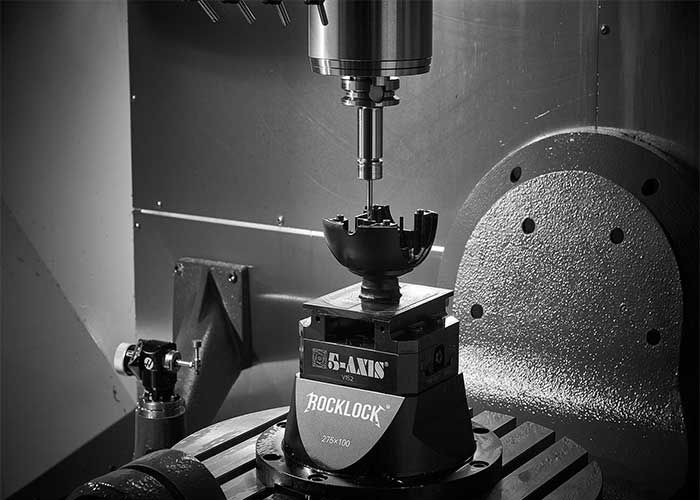CNC machining is a cornerstone of modern manufacturing, offering high precision and the ability to create complex parts with exceptional accuracy. However, even the best CNC machines can face defects that affect the quality of the final product. Understanding the common CNC machining defects and implementing the right strategies to prevent them is essential for ensuring high-quality production. In this blog, we’ll dive into some of the most common CNC machining defects and provide solutions for minimizing them.
- Overcutting in Workpieces
Overcutting refers to a situation where the tool cuts beyond the desired dimensions, leading to errors in the final workpiece. This defect is often caused by factors such as tool springing, excessive tool length, or improper cutting parameters. Inaccurate cutting allowances can also result in overcutting, especially when side and bottom surfaces are not evenly accounted for.
How to Prevent Overcutting:
Use Larger and Shorter Tools: Larger and shorter tools are less prone to deflection, helping maintain precision.
Maintain Consistent Cutting Parameters: Adjust feed speeds, cutting allowances, and tool types to ensure the cutting process is smooth and consistent.
Chamfering Program: Implementing a chamfering program helps maintain uniform allowances across the workpiece, ensuring better results on both side and bottom surfaces.
- Centering Issues
Proper centering is crucial for ensuring that the tool is aligned with the workpiece. Centering issues can arise due to human error during manual operations, burrs on the mold, or using magnetic centering rods. If the mold is not vertical or properly aligned, the cutting process can become skewed, leading to defects.
How to Prevent Centering Issues:
Check Manual Operations: Ensure that manual operations are performed with care, centering at the same point and height as much as possible.
Remove Burrs and Debris: Burrs can interfere with the centering process, so clean the mold thoroughly before use.
Use Accurate Tools: Ensure that the centering rod is demagnetized before use, and use a dial indicator to check vertical alignment.
- Tool Setting Issues
Tool setting errors, such as incorrect clamping or the use of the wrong tool, can significantly affect machining accuracy. Inaccuracies in manual tool settings, especially with fly cutters, R-cutters, or flat-bottom cutters, can lead to mismatches and defects in the final part.
How to Prevent Tool Setting Issues:
Repeat Tool Settings Carefully: Ensure that the tool is set correctly each time, checking for accuracy before starting the machining process.
Use Consistent Tool Types: When measuring or setting tools, use the same tool type throughout the process to avoid discrepancies.
Clean Tool Clamps Regularly: Keep the tool clamps clean from debris to ensure proper clamping and prevent inaccuracies.
- CNC Crashes (Programming and Operator Errors)
CNC crashes, where the tool or chuck collides with the workpiece during machining, are often caused by incorrect programming or operator errors. Common causes include incorrect safety height settings, using the wrong tool, or mismatched tool lengths in the program.
How to Prevent CNC Crashes:
Double-Check Programming: Ensure that the tool listed in the program matches the actual tool used in the machining process.
Accurately Measure Workpiece Heights: Measure the height of the workpiece and set the safety height above it to avoid collisions.
Consistency in Tool Lengths: Always ensure that the tool length and depth are clearly noted and consistent with the actual machining process.
- Surface Accuracy in Curved Areas
Curved areas are particularly sensitive to machining errors, as uneven cutting parameters or dull tools can result in rough, uneven surfaces. If the tool is not optimized for the specific curvature or the cutting process is improperly executed, it can lead to defects in the final workpiece.
How to Improve Surface Accuracy:
Optimize Cutting Parameters: Adjust cutting speeds, tolerances, and allowances to better suit the material and shape of the workpiece.
Inspect Tools Regularly: Check tool sharpness and replace them when needed to ensure clean, precise cuts.
Use the Right Tool for the Job: Ensure that the correct cutter (e.g., ball nose or flat cutter) is used for curved areas to achieve the best surface finish.
Conclusion
CNC machining is a powerful tool for creating high-precision parts, but defects can still occur if the process is not carefully managed. By understanding the common CNC machining defects—such as overcutting, centering issues, tool setting errors, CNC crashes, and surface inaccuracies—manufacturers can implement strategies to reduce these issues and improve product quality. With attention to detail, accurate programming, and regular tool inspection, manufacturers can achieve consistent, high-quality results and enhance overall efficiency.
By focusing on proper tool usage, precise measurements, and accurate programming, you can ensure that your CNC machining operations run smoothly and produce the flawless workpieces your clients expect.
